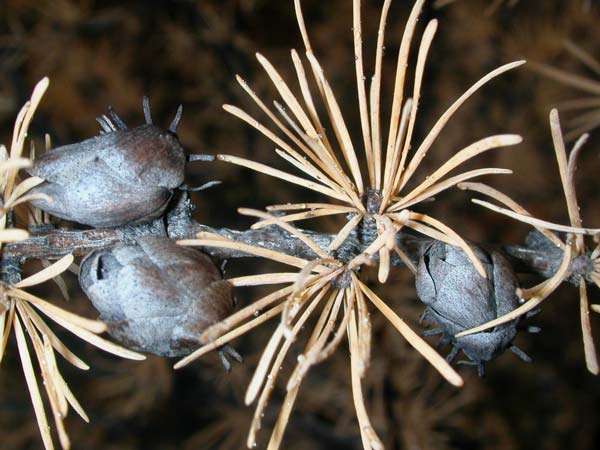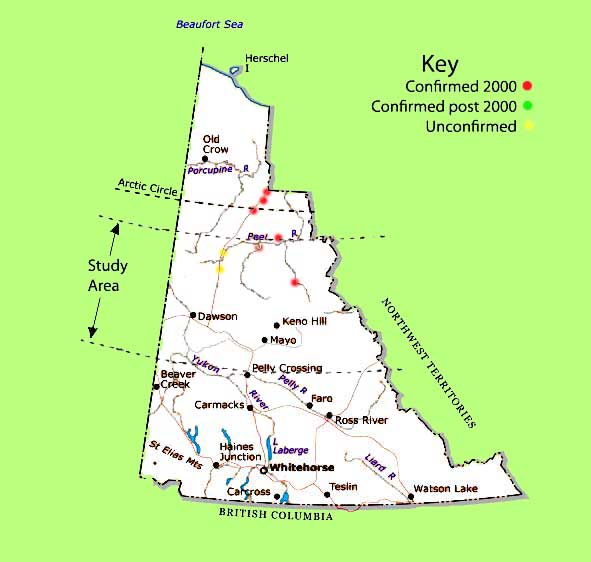Larix Laricina : Larch
Taxonomy | Description | Biology | Ecology | Uses | Images | Range Maps
Taxonomy |
Scientific Name:Kingdom: Plantae Division:
Class: Coniferae (cone bearing) Family: Pinaceae (Pine Family) Genera: Larix (Larch) (Lat. lar=fat referring to the resin) Species: Laricina (Lat. lar=fat referring to the resin) Synonym(s): L.alaskensis English Name(s):Larch, Tamarack, Alaskan Larch First Nation Names:ts'iiteenjuh (Gwichya)or tsiiheenjoh (Teetl'it) |
Description |
Structure:
Leaves:
Reproductive Parts:
Seed:
Not to Be Confused With:
|
Ecology |
Animal Uses:Habitat:
|
Images |
|
Female cones and yellow leaf (needle) tufts in autumn. Larch (yellow) next to Spruce. Small tress growing in wet tundra habitat. Illustration from: Illustrated Flora of BC |
Range Maps |
|
World Range: Boreal North America; From NL & LB to central AK.
In Yukon: Known from Peel river drainage and Liard River drainage. Not found in the Yukon River drainage. |





